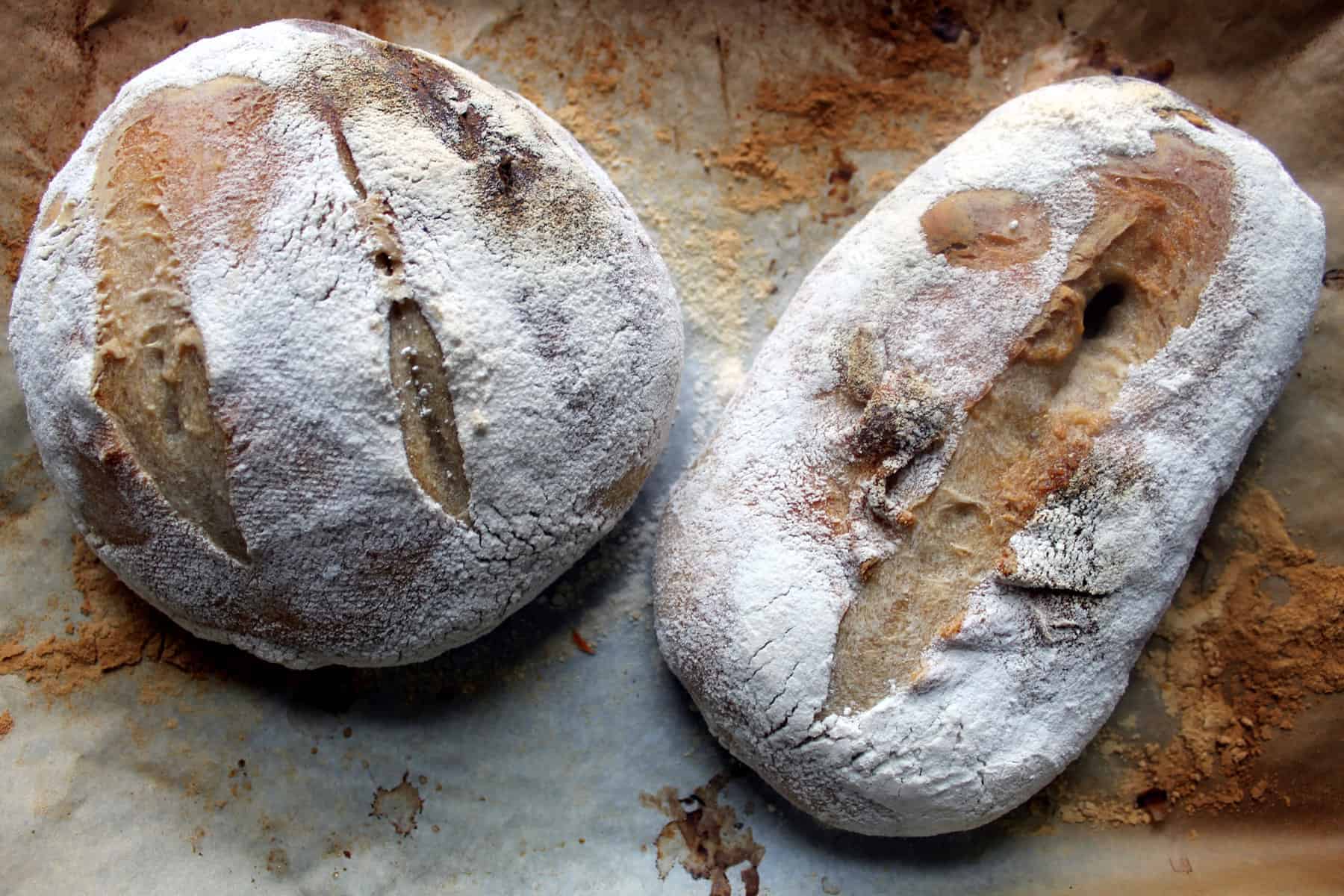
Dear friends, since we last spoke I have made some gains in my journey towards sourdough baking, but I have also amassed some losses. However, I feel like I am moving towards something better; perhaps this is the halfway point?
After my last entry, I have made two more loaves with my first sourdough starter, on the basis of Daniel Leader’s recipe in Local Breads. My second attempt, a modern spin on Parisian baguette with liquid starter, was much better than the first: the bread rose slightly, the crust glistened beautifully and crackled when torn, and the holes in my bread were large enough to inspire sonatas. The only downside: that recipe required about three days of work and waiting, and it was unbearably wet and sticky.
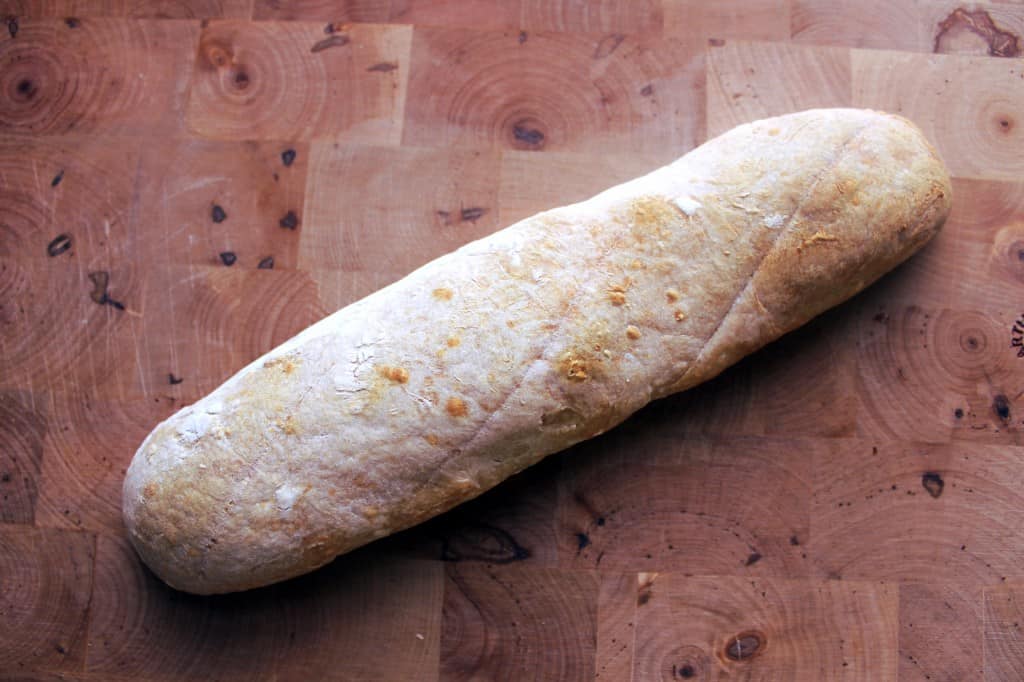
My third bread was a French country boule, again following Leader’s recipe. This is the bread I showed you last time. Though it did not rise properly, it was delicious.

Especially with some homemade blackberry and Saskatoon berry preserves.
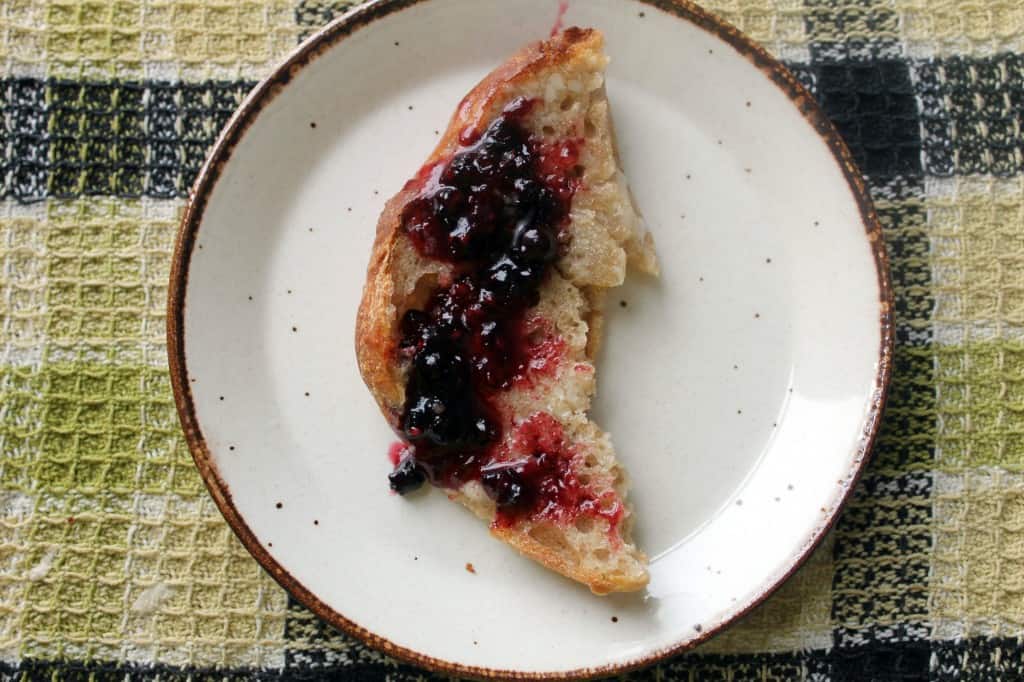
I was disappointed, and decided it was time to try a new starter. Perhaps my starter was just not active enough? Or maybe I didn’t feed it enough and it starved to death? (I could have waited longer, but at this point my starter was about three weeks old. I could have tried to revive it; but alas, my impatience got hold of me, and to the garbage it went).
I would start from scratch, I decided. I would make a new starter according to Daniel Leader’s recipe for liquid levain.
Day I
It is a satisfying feeling, cultivating a new starter. Leader calls for 160g of water, 25g of all-purpose flour, and 25g of rye flour, which in following days will be supplemented by equal amounts of water and flour. This makes for a wet, or liquid levain that is supposed to ferment faster, and to make bread rise more easily. We shall see…
Day IV
This is already going pretty well. Though there is no clear fermentation going on, the starter is behaving as expected (liquid and flour are separating, it doesn’t really change size but there are some very small bubbles and a yeasty smell). I am optimistic that this will proceed as planned.
Day VII
I have been feeding my starter once a day, as Leader instructs. However, his starter takes an unorthodox approach and doesn’t advise me to discard any starter during feedings. I have read up on this, and apparently at this early stage of development the starter is so young that it doesn’t eat – and therefore, doesn’t ferment – quickly enough, so it shouldn’t starve even if only feedings are occurring once a day and its size continues to grow. The starter itself is looking well, there is a lot of bubble action, and the mixture gets pretty viscuous and strandy when I let it drip off my spatula.
Despite the assurances of the Internet, I will discard just a bit of the sour to make myself feel better.
Day X
My starter is progressing nicely, and I am ready to try my hand at another bread-baking experiment. I will try once more to make the French country boule that failed last time. I will make some gentle tweaks and see what happens.
Day XII
So, this was an interesting experiment. This time, I followed Leader’s recipe closely, with some changes: a) I let my separated, refreshed sourdough starter mixture ferment for a full 18-20 hours, as opposed to the 8-12 recommended. I am not sure if this did more good than harm, but I didn’t plan this well and had no choice. B) I also let my dough ferment for substantially longer during its first full fermentation, a whole 8-12 hours, allowing the starter to work its magic and allow the yeast more time to feast. C) I had also carried out this ferment in a vintage crock, made in Medalta, Alberta, which I kept in a turned-off oven as opposed to in the bare room. D) Finally, due to time constraints, I also baked my breads in two shifts: the first loaf immediately after its second hour-and-a-half long ferment, but the second loaf was relegated to wait in the fridge, covered in plastic wrap, until I returned from work, for about 8-12 hours. According to the Internet, this should have been fine.
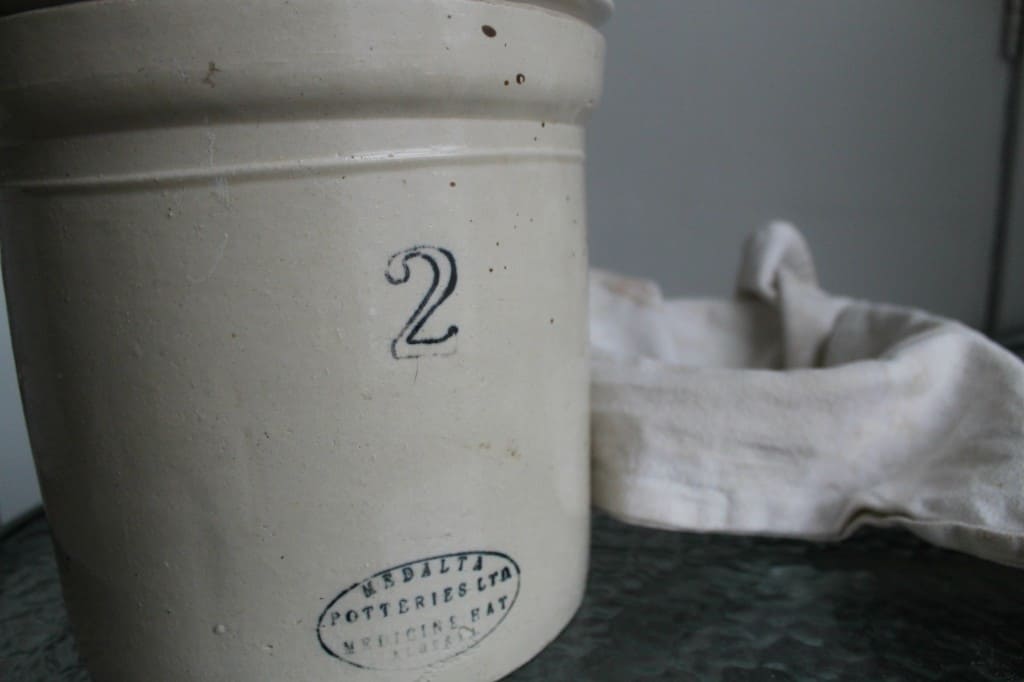
The results are mixed. While this time the taste of the sourdough is great, and the big bubbles appearing in the bread show me that the yeast was, indeed, active. I believe the longer fermentation of the dough had part in this. However, both my loaves still collapsed, with the second one experiencing a particularly devastating expansion and coming to resemble a thick crust ciabbata rather than a French boule. I think this may be the result of the longer fridge wait-time, and the really bad job I did transferring my dough from the bowl onto the baking sheet after its second fermentation; I didn’t flour my bowl enough, and my dough was sticking to it horribly, like an emotional infant who cannot bear to be torn away from its mothers bosom. As a result, the dough experienced some minor tearing, and not unexpectedly, deflated.
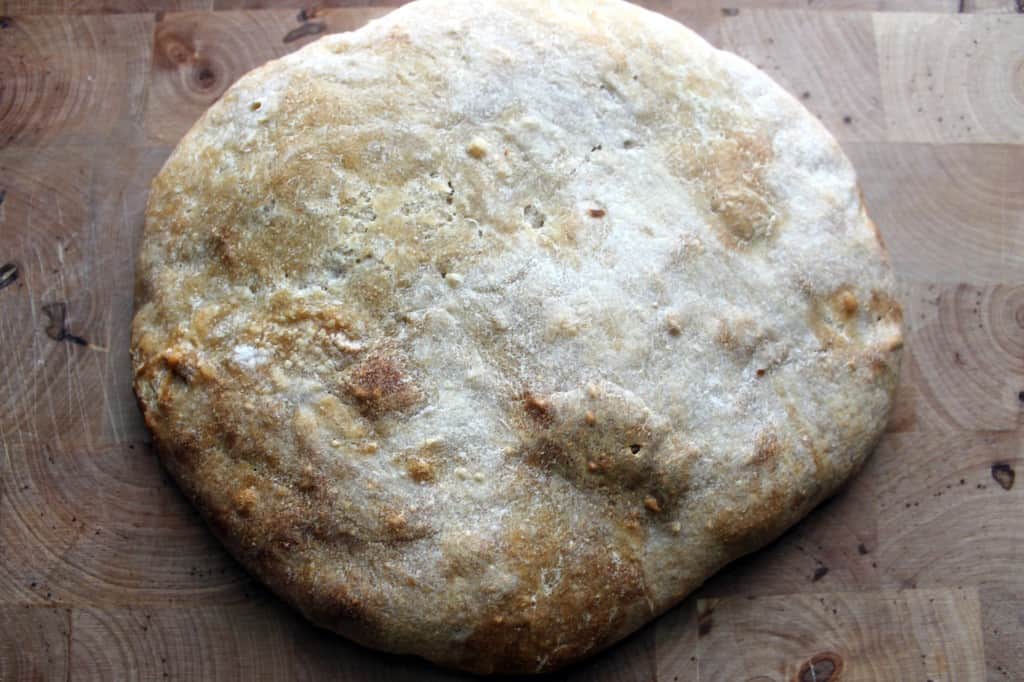
This result was truly devastating: a delicious, golden, but very, very flat loaf. No, that's not the moon you're looking at, but my bread.

I will try again in a couple of days, with a few additional tweaks, and see how my dough fares.
Day XIV
Finally, dear reader, some minor success! My loaves look very handsome, and I believe I have learned some very valuable lessons that I would like to share with you.

This time, I refreshed my starter for the requisite 8-12 hours. I did go with a longer first fermentation for my dough once again, letting it ferment in a covered crock in the oven overnight. Once again, this resulted in beautiful holes in the dough, and I am fairly positive I will stick to this method, at least during winter. However, the biggest breakthrough for me was something that I should have noticed a long, long time ago, and which would have saved me considerable agony. It turns out that this whole time, I had been neglecting to line my bowl with a kitchen towel before adding the dough for the second ferment.
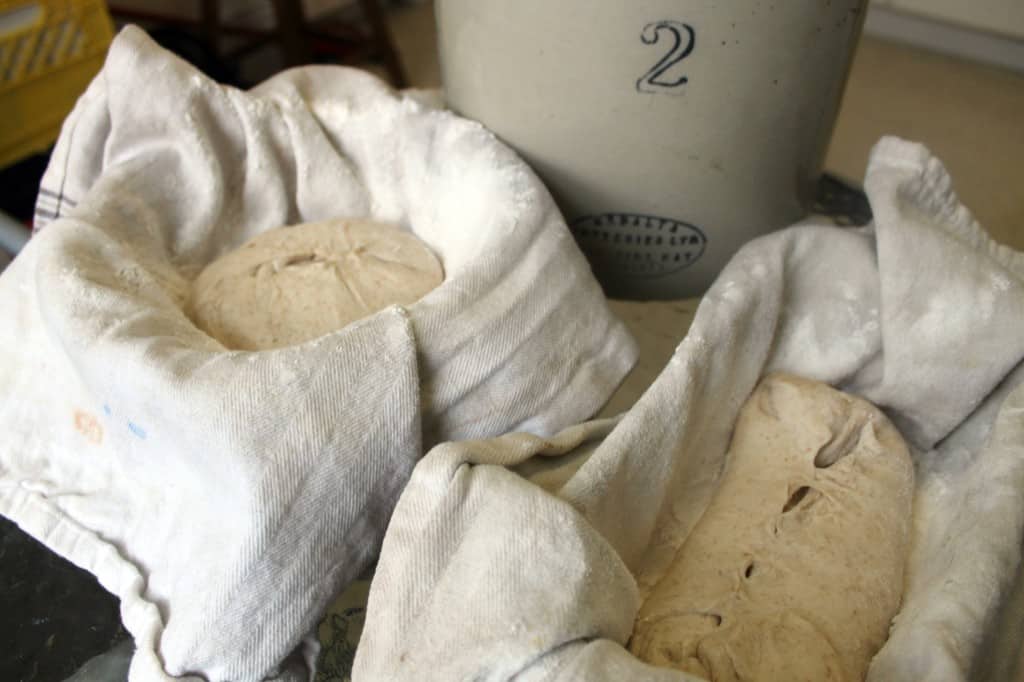
This time, I lined two differently shaped bowls with two towels, then floured them carefully, and added my shaped loaves. One loaf I shaped into a boule, and it rose slightly, and never came to resemble a pita. The second loaf I shaped into a batard, similar to my first baguette attempt. I am delighted to report that this loaf, too, turned out perky, full of holes, and with the distinct flavour of homemade sourdough.
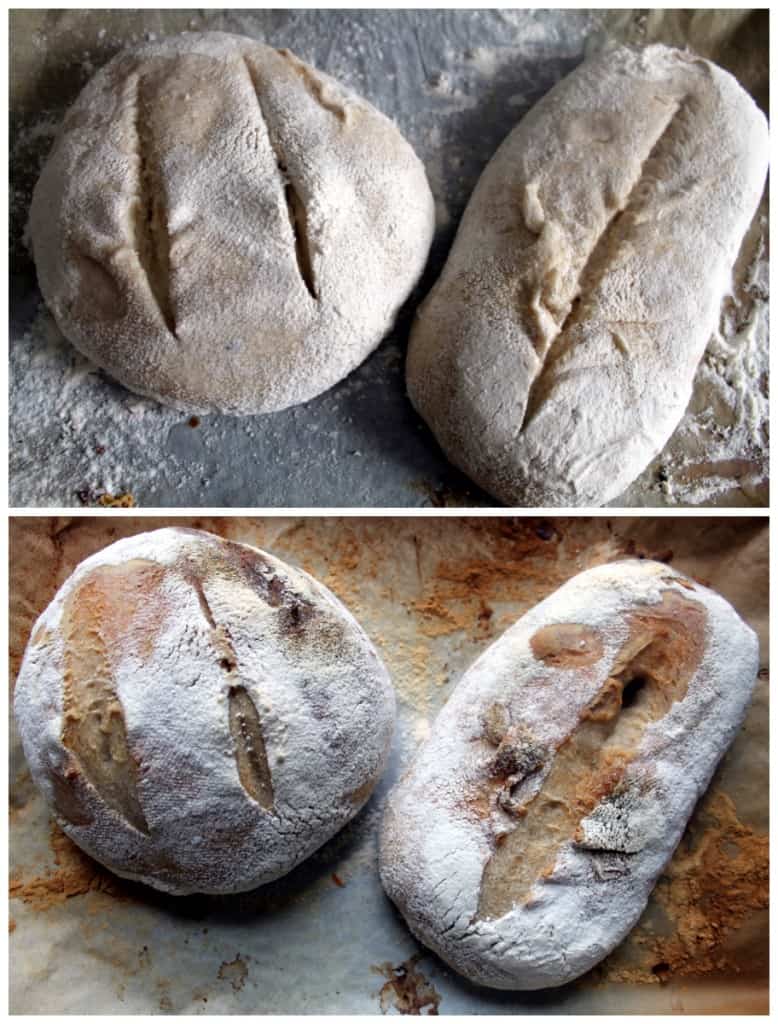
Dear reader, I have finally reached a satisfactory conclusion – bread I can actually proudly show to others. Which means that this would be the perfect time to switch recipes… Because I am never one to rest easy.
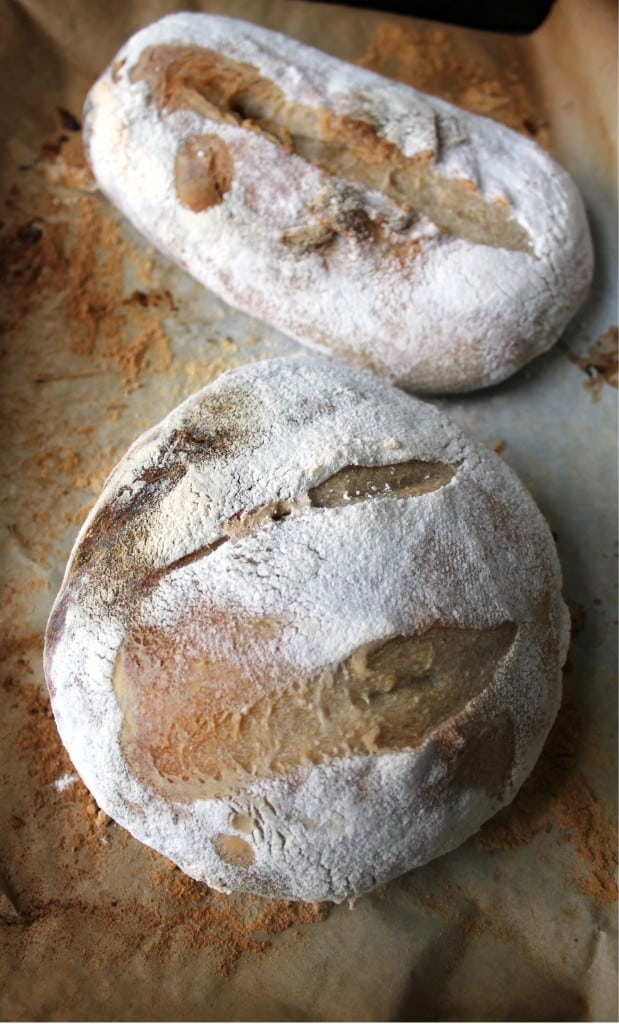
However, I am not going to share Daniel Leader’s bread recipe. Firstly, because it doesn’t seem to appear in too many places on the Internet, and I always feel iffy about sharing content from books. And secondly, and perhaps even more importantly, because others seem to be having problems with this recipe. Then others still were successful, so the jury is still out. I am no expert baker, as you can see, and I have experienced some similar frustrations, while still being successful in the end… But I don’t think this is one recipe I would recommend to others. If you're really interested, the recipe is available through some of these links.
His starter, however, is a different story altogether. If this caught in my apartment in the middle of a Canadian winter, then I am confident it should work in your house as well. It’s a fairly easy and maintenance-free starter, and it does catch on quickly. Do try it, and let me know how it goes.
ED: This post was featured on Food Gawker, Tastespotting, and Food Foto Gallery! Check out these excellent recipe aggregators if you're ever at a loss of what to make.
Recipe
Tried and loved this recipe? Please leave a 5-star review below! Your reviews mean a lot to me, so if you've got any questions, please let me know in a comment.
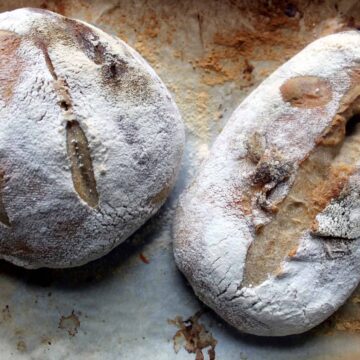
Liquid levain, or sourdough starter
Ingredients
- On Day 1:
- 160 grams ⅔ cup water, tepid temperature (70 to 78 degrees)
- 25 grams 3 Tbs all-purpose flour
- 25 grams 3 Tbs rye flour
- On Days 2-3:
- 65 grams ⅓ cup water
- 50 grams ⅓ cup AP flour
- On Days 4-10:
- 175 grams ¾ cup water
- 135 grams ¾ cup AP flour
Instructions
- Prepare a clean glass jar. Add 160g of water, 25g of AP flour, and 25g of rye flour, covering it loosely with plastic wrap or a lid. (rye flour ferments faster than AP and gives your starter a much-needed push; I didn't have any rye flour, and whole wheat seemed to do the trick fine.)
- Stir the culture with a rubber spatula for 30 seconds every 8 hours or so for the first 24 hours.
- On days 2 and 3, add another 65g water and 50g AP flour, and continue stirring your starter every 8 hours. If your starter changes, becoming more yeasty, with small bubbles, you're ready to move on to day 4. Otherwise, give it another day at the same level of feeding.
- On days 4-10, or possibly even longer, give your starter 175 grams of water and 135 grams of AP flour once a day (you can divide it into two feeding if that will make you feel better). Your starter should be exhibiting definite signs of change at this point: the surface will be glossy and covered in bubbles; the culture will expand slightly (liquid starter doesn't grow in size quite as much as dry starter); the smell will be fruity; and as you run a spatula through it, the starter will appear gelatinous. If puddles of liquid appear on top of your starter, don't worry, but do note you should probably feed your starter a bit more.
- When all of these signs are present (usually around day 10): congratulations! You're ready to bake with your starter. Or to place it in the fridge until it's ready to be refreshed before baking (a starter should keep for about a week in the fridge without feedings).



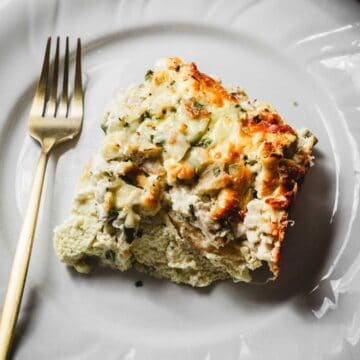
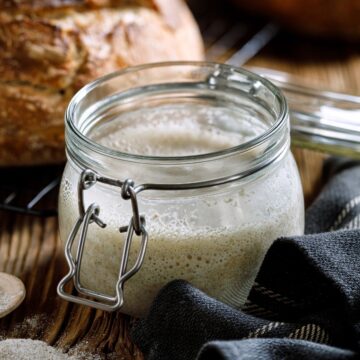
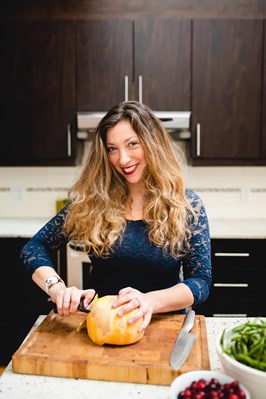
Tell Me What You Think!